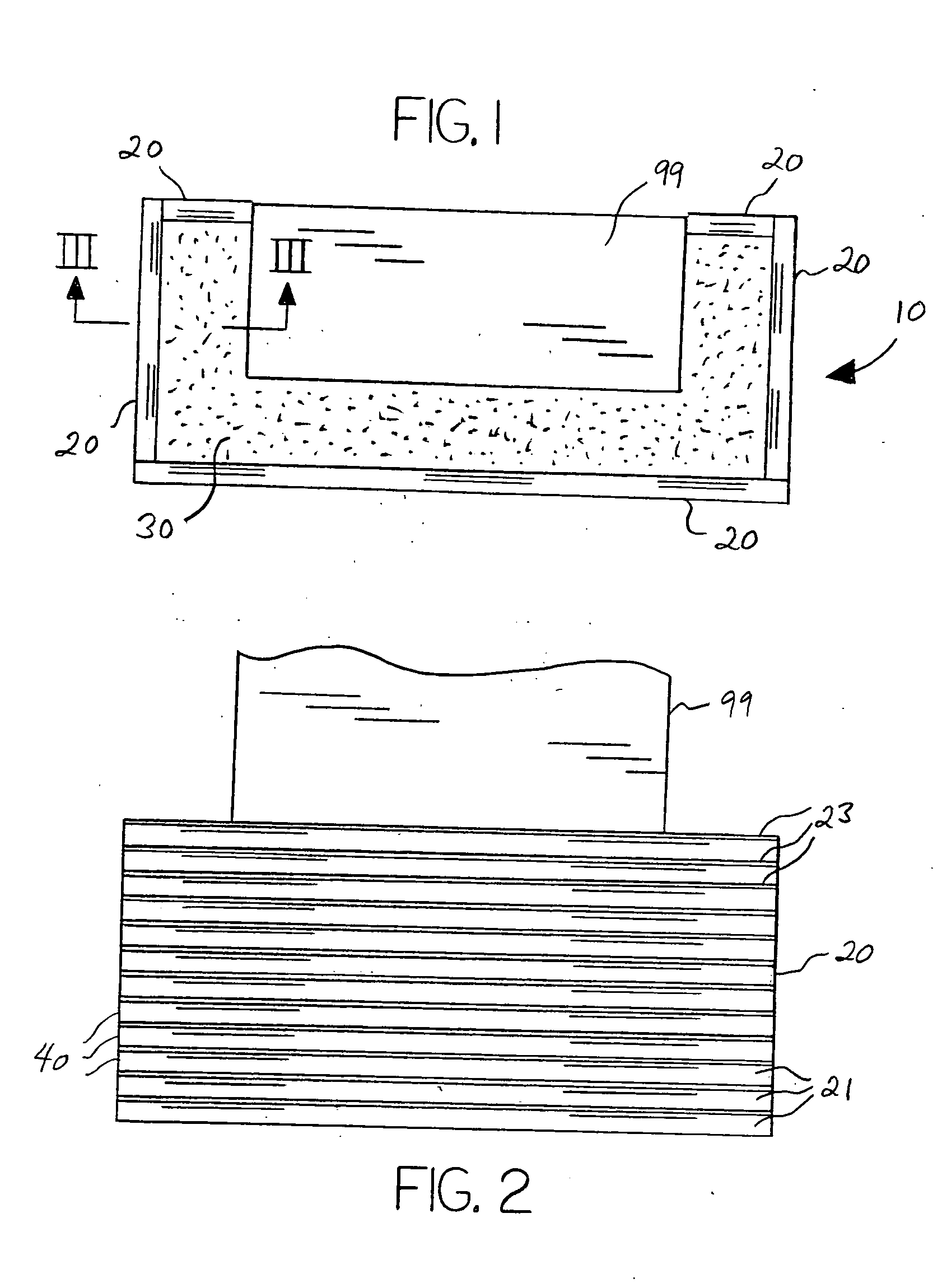Blast protection system
a protection system and blast technology, applied in the direction of protective equipment, weapons, armour, etc., can solve the problems of not being able to protect all vulnerable structures, potential targets may become targets, and the vulnerable of bridge columns, so as to minimize the amount of energy.
- Summary
- Abstract
- Description
- Claims
- Application Information
AI Technical Summary
Benefits of technology
Problems solved by technology
Method used
Image
Examples
Embodiment Construction
[0018] With reference to the drawings, the invention will now be described in detail with regard for the best mode and the preferred embodiment. In general, the invention is a blast protection barrier system 10 comprising horizontally folded wall members 20 and energy dissipating particulate matter 30 used to protect a structure 99 from a blast shock wave resulting from detonation of an explosive adjacent the blast protection system 10. The system 10 will typically comprise multiple linear wall members 20 joined as required to shield the structure 99 from multiple directions by forming a perimeter. The protected structures 99 may consist of buildings, towers, storage tanks, or any other structure or object requiring protection of the type described herein. For purposes of illustration, the invention is herein shown as protecting the three sides of a bridge column facing a roadway, but it is to be understood that the invention may be constructed to face any number of directions and m...
PUM
| Property | Measurement | Unit |
|---|---|---|
| angle | aaaaa | aaaaa |
| centered radius | aaaaa | aaaaa |
| centered radius | aaaaa | aaaaa |
Abstract
Description
Claims
Application Information
 Login to View More
Login to View More - R&D
- Intellectual Property
- Life Sciences
- Materials
- Tech Scout
- Unparalleled Data Quality
- Higher Quality Content
- 60% Fewer Hallucinations
Browse by: Latest US Patents, China's latest patents, Technical Efficacy Thesaurus, Application Domain, Technology Topic, Popular Technical Reports.
© 2025 PatSnap. All rights reserved.Legal|Privacy policy|Modern Slavery Act Transparency Statement|Sitemap|About US| Contact US: help@patsnap.com



